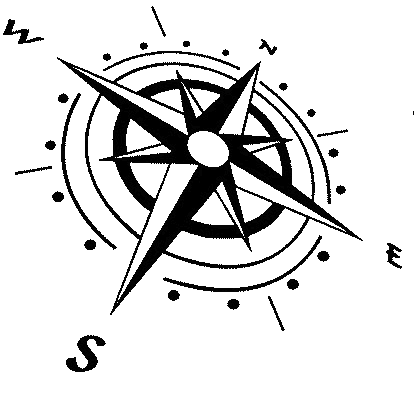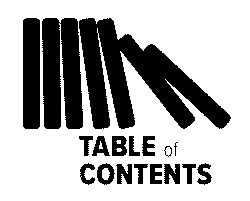Further Reading
Books:
Since the Wei-Hsien Civil Assembly Centre, as the Japanese called the prison camp, was liberated, there have been several books published about the camp and the lives of the inmates. As well, there have been personal recollection documents compiled for circulation among ex-inmates who still keep in touch with each other.
Among the books published are:
Stars in the Sky by Father Patrick Scanlan. Published by Trappist Press, Hong Kong 1984. No ISBN number. Gives a fascinating account of his life before, during and after camp. Left camp with many other Catholic clergy for monastic internment in Peking, mid-August 1943. Peking was liberated on August 19, 1945.
Courtyard of the happy way by [Reverend] Norman Cliff. ISBN 0-85305-191-7. Published Arthur James Limited, England 1977. Outlines how he was taken prisoner as a boarding school boy and his experiences as an internee in Chefoo. Came to the camp with siblings and no parents in late 1943. The author, at times, shared camp work duty rosters with members of the Cooke family. In camp at liberation.
Shantung Compound by Langdon Gilkey. Two ISBN numbers are given in book. The first is on the furniture page after the title page. It is ISBN 0-06-063113-9. The other, ISBN 0-06-0631120, is on the back cover. Published by Harper & Row. New York 1966. Discusses his experiences and examines the social and moral problems that emerged from time to time in the camp. A critical weakness of the book is that the author has changed the names of the people he writes about. For instance: Father Scanlan appears as Father Darby. Came to the camp in mid-1943. In camp at liberation.
The Mushroom Years by Pamela Masters. ISBN 0-966489-2-8. Published by Henderson House Publishing, Placerville, California. Reports on the experiences of three British sisters and their parents during their internment after a period of house arrest in Tientsin. Uses, at some times, incorrect names. For instance: Father Scanlan becomes an American Trappist brother called O'Hanlon. Author came to the camp in early 1943. In camp at liberation.
The Enemy Within by Raymond J De Jaegher and Irene Corbally Kuhn. Published by the Society of St Paul, Bandra Bombay — 50, in 1969. No ISBN number. Father De Jaegher reports on his intelligence gathering activities and the role played by key figures in the camp. Because of his contacts, the camp leader-ship knew about the progress of the war. Played a key role in the escape of Hummel and Tipton. Came to the camp in early 1942. In camp at liberation.
Chinese Escapade by Laurence Tipton. Published by Macmillan and Co in England 1949. Outlines his detention by the Japanese, his planning and involvement in the only successful escape from the camp (with Arthur Hummel) and his subsequent war adventures. To the delight of the camp's inmates, he returned with Hummel to the camp shortly after it was liberated.
Indomitably Yours by Hilda Hale, ISBN 0-9683139-0-6. Reports on Australian mother's life in Peking before Japanese interned her. Discusses camp life, her concerns about her children's upbringing in camp. Came to the camp with Peking contingent. Was in camp at liberation.
Hungry Ghosts by Mary Taylor Previte, Published by Zondervan, Grand Rapids in the US 1994. ISBN 0-310-59420-0. Previte was a child prisoner in the camp and came to the camp without her parents from the Chefoo schools.
A Boy's War by David Michell. Published by Overseas Missionary Fellowship Books in Toronto, Canada in 1988. ISBN 9971-972-71-9. Michell was a child prisoner in the camp.
Little Foreign Devil by Desmond Power. Published by Pangli Imprint, West Vancouver, Canada. ISBN 0-9694122-1-5.
A Cross in China – The Story of My Mission by Sister Servatia O.S.F. Published by Cuchullain Publications, Fort Wayne in the US in 1989. ISBN 0-9614659-4-8. Sister Servatia was a nun imprisoned in the camp.
The Left Handshake by Hilary St George Saunders. Published in 1948, Chapter 5 recounts the activities of the Boy Scout troops set up in the prison camp. The author's brother was a member and still has his troop records, his `good deeds' book as well as the exam papers he had to sit to earn merit badges.
Not published as a book is This is Leo's lift' by Lionel (Leo) Twyford Thomas. Outlines his early life in China, England, Canada and then return to China. Discusses the internment experiences of his family. Also covers his subsequent post-war experiences in China and why, with his family, he moved some years after liberation from the camp to Sydney, Australia. Discusses his life in Australia, where he died in January 2000. With his family, he was in camp at liberation.
In the archives of the Yale University Divinity School there are many references to the compound both as a missionary teaching college and later as a Japanese prison. The records are contained in personal memoirs lodged with the school.
On the worldwide web at: http://search.npr.org/cf/cmn/cmnpd0l fm.cfm?PrgDate=05%2F11%2F2000&PrgID=3 , there is a downloadable audio file of a radio program broadcast by National Public Radio in the US on May 11, 2000 in which survivors of the US military team that liberated the prison camp recalled the liberation. With them on the program is Mary Taylor Previte (see earlier) a child prisoner in the camp. She tracked down the team survivors of which there were four in 2000.
A description of life in Tsingtao in the early months after the post-World War II arrival in Tsingtao of the US Marine Corps is provided in Charlie Two Shoes and the Marines of Love Company by Michael Peterson and David Perlmutt. Published by Naval Institute Press in Annapolis, Maryland, 1998. ISBN 1-55750-672-8. The book outlines the surrender of the Japanese in Tsingtao, gives details of subsequent Marines' military activities in Tsingtao and the Tsingtao hinterland.
#










